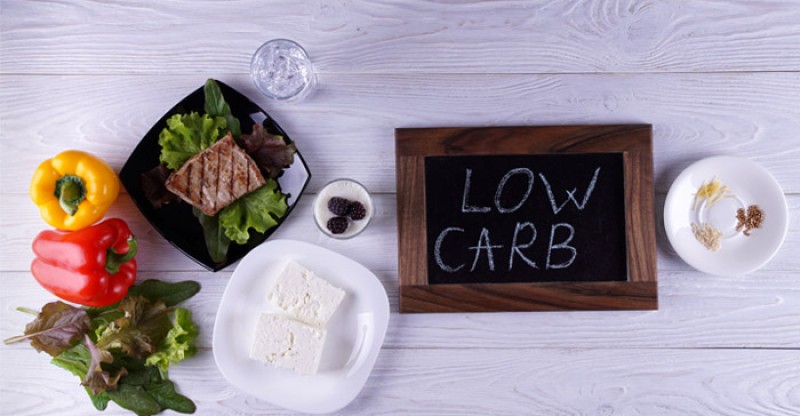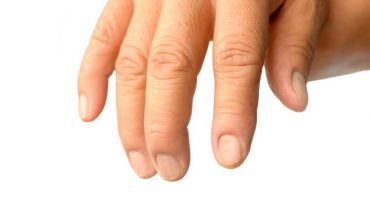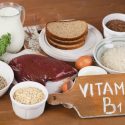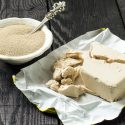65 Science-Backed Healthy Low-Carb Foods
Healthy carbs are limited carbs.
A low-carb diet is specifically named because carbohydrate intake should be reduced to promote health.
The benefits of cutting carbs are endless.
Low-carb diets lead to a reduction in hunger levels (1), aid weight loss without calorie counting (2) and boost metabolism.
Cutting carbs has also been proven to drop blood-sugar levels (4), blood pressure and LDL cholesterol (6).
Finding foods that haven’t been injected with sugars and other hidden carbs is getting more and more difficult.
This has led to an explosion in “natural” food choices.
The low-carb food list below is loaded with foods that are either “net zero” (net carbs is grams of carbs minus grams of fiber) or completely devoid of carbs.
The lower the carb count, the healthier it is for you on a low-carb diet.
Here is a list of 65 Healthy Low-Carb Foods.
Meats
Get friendly with meat as you’ll be eating a lot of it during a low-carb diet.
Healthy low-carb meats are high in beneficial fats, low in saturated fats, and full of protein.
This will leave you feeling fuller for longer while getting essential nutrients into your body.
Unprocessed
The safest way to eat meats is to buy them unprocessed.
This means that the food hasn’t been altered in any way.
No added sugars, salts, or suspect ingredients – just pure unadulterated protein.
These meats are essential to a low-carb diet.
Unprocessed meats are high in nutrients and contain zero carbohydrates.
1. Beef is satisfying and savory and contains vital nutrients like iron and B12 (You can enjoy a variety of cuts: steaks, roasts, ribs and ground beef.)
2. Poultry: Chicken, turkey, quail and other fowl are great sources of protein. The meat is lean and an excellent source of niacin and selenium.
3. Pork is a mild-tasting meat. It’s a great source of protein and vitamins, which include thiamin, zinc and vitamin B12. Some packages will inject other cuts of pork (roast, chops, etc.) with flavor enhancers. Look for products that do not contain artificial ingredients.
4. Lamb is similar to beef. It contains high levels of iron and B12. Most lamb sold is grass-fed and, depending on the origin, the taste can be slightly gamey. Lamb is known to contain conjugated linoleic acid (CLA) and can reduce heart disease and cancer (8).
5. Game: Ostrich, venison, bison, emu, rabbit and other game meats contain less saturated fat and are loaded with healthy nutrients like riboflavin, niacin, B12, and iron.
Processed
Processed meat can contain hidden carbs.
Manufacturers of these products add all sorts of sugars to boost the flavor of their foods.
Be sure to look at the packaging prior to purchase at your local grocery store.
6. Ham is a cured meat that typically contains sugar. The amounts will vary and this will have an impact on the number of carbs present. Ham is an excellent way to get thiamin and vitamin B6.
7. Corned Beef is salt-cured beef. It typically contains nitrates, sugar, and other spices. It contains protein, vitamin B12, selenium, and zinc.
8. Sausage can be made from a variety of types of meats – chicken, beef, and pork. The meat is ground with spices and sometimes stuffed into casings. Sausages are high in fat and loaded with iron and other nutrients.
9. Deli Meat: Cold cuts, luncheon meats, and deli meats are precooked, and some may also be cured. Read the labels to determine the carbs as each product will be prepared differently. Honey, sugar and a variety of spices may be used to flavor the meat.
10. Hot Dogs: Frankfurters, wieners or hot dogs – whichever name you prefer – are cooked sausages that can be made from various meats. Beef and pork are most popular, though chicken and turkey are widely available as well.
11. Jerky is cut meat that is seasoned and dried. Nearly every meat is available in a jerky form and each will be seasoned with a variety of ingredients. Some may even contain sugar and artificial colors. It can be a great protein-packed snack, but be sure to check the label.
12. Canned Meat can be a convenient way to obtain your protein and nutrients. A number of varieties (pork, chicken, beef and even fish) are available. Check the label to see what ingredients, spices and fillers may be used.
Seafood
Not all seafood is made alike.
Shellfish and cephalopods all contain minimal amounts of carbohydrates.
The natural sugars in these types of meat can range depending on the species and where it lived.
Seafood is high in omega-3 fatty acids, B12, and iodine.
Net Zero Carbs:
13. Crab meat is soft, delicate and sweet. The calorie count is low and, with only trace amounts of saturated fat, crab is a great choice for the protein that is packed with vitamin B12.
14. Tuna is a saltwater fish with deep-red flesh and dense texture. It is sweet with a mild flavor that is enjoyed for its beef-like qualities. It is best-served medium-rare, and it contains selenium, vitamin B3, and phosphorus.
15. Salmon is enjoyed by many health-conscious people and is a very popular fish. Its flesh is delicate and flaky. Some may find the flavor of salmon a bit fishy. Salmon is packed with healthy fats like omega-3 that are great for your heart (9).
16. Cod fish is lean and mildly flavored. It has a firm and dense texture but is still delicate and moist. Cod is a popular choice for those who prefer less “fishy-tasting” fish. It contains selenium, phosphorus, vitamin B6 and omega-3 fatty acids (10).
17. Catfish is protein packed, and this fairly fatty fish is low in sodium and high in the nutrients thiamin, potassium and selenium.
Some Carbs:
18. Clams are a low-fat source of protein and, while trace amounts of carbs may be found, it’s an excellent choice for healthy minerals. Clams contain zinc, magnesium, and B vitamins.
19. Lobster This marine crustacean is loaded with protein, copper, and selenium. It’s low in calories, high in protein and an overall lean meat source.
20. Oysters are one of the most balanced foods you can eat. They are a healthy choice for those looking for high protein, low fat, low calories and plenty of beneficial minerals like calcium, zinc, and vitamin C.
21. Octopus is low in fat and high in protein. It contains nutrients and healthy B vitamins. Consumption should be limited as an octopus is also high in cholesterol.
22. Mussels are a fabulous choice for nutrient-dense food in meaty little bites. Mussels are packed with iron, but even more impressive are the antioxidants found in mussels. This superfood is a must.
23. Shrimp is a delicately sweet and salty shellfish that is a popular choice. Shrimp is protein packed and contains astaxanthin – a powerful carotenoid antioxidant.
24. Squid: Calamari or squid has a mild and slightly sweet meat that is firm and low in sodium. Squid contains copper, selenium, riboflavin and other healthy nutrients.
25. Scallops is a sweet and chewy shellfish that is an excellent source of magnesium and potassium.
Vegetables
The food that you’ll be putting into your body the most is not meat – it’s vegetables.
Since vegetables are high-fiber low-carb foods containing life-enhancing vitamins, they are one of the healthiest things you can put in your body.
There are a few veggies that are high in carbs, such as carrots, parsnips, potatoes, yams, and corn (which is really a grain), but most are perfectly acceptable.
Stick to the green veggies and avoid the roots if you’re unsure at the grocery store.
26. Leafy Greens: There are a number of leafy greens that are great options for keeping your carb count down. Spinach, arugula and romaine lettuce are excellent choices and contain an array of vitamins, minerals, and antioxidants.
27. Cucumbers contain high levels of vitamin K and molybdenum. The essential nutrient pantothenic acid is also found in cucumbers.
28. Cauliflower is a brassica and a great source of folate, choline, omega-3 acids and biotin.
29. Broccoli, also a brassica, is high in fiber. It contains minerals like potassium, copper, choline and a range of B vitamins. It is also a source of omega-3 fatty acids.
30. Bok Choy is a Chinese cabbage that is packed with nutrients. This dense vegetable contains beta-carotene, folate, niacin, zinc, and manganese.
31. Celery is an excellent source of molybdenum and folate. Other nutrients include potassium, manganese, and vitamin B2.
32. Zucchini is a delicious summer squash that is packed with thiamin, niacin, folate and pantothenic acid. Zucchini is high in dietary fiber and low in cholesterol.
33. Eggplant is a nightshade plant which is loaded with dietary fiber, copper and vitamin B1. Eggplant is known to contain phytonutrients like chlorogenic acid, which is linked to anti-aging and cancer deterrence.
34. Mushrooms: Technically fungi and not a vegetable, mushrooms are packed with potent nutrients. Benefits include high amounts of B vitamins as well as potassium and zinc.
35. Asparagus is a spring vegetable that is loaded with vitamin K and vitamin E. It is also high in dietary fiber and contains pantothenic acid.
36. Pumpkin comes from the squash family, and this vegetable is low in cholesterol and contains vital nutrients like vitamin C, riboflavin, potassium, and copper.
37. Cabbage is a great source of manganese, potassium, vitamin B1, folate, and copper. It’s one of the best high-fiber, low-carb vegetables, and it’s easy to add to any meal.
Condiments & Seasonings
You may think that condiments and seasonings are relatively safe from carbohydrates.
This is mostly true; however, it’s important to check labels before purchasing for your low-carb diet.
Most foods contain carbs but you’re relatively safe with condiments and seasonings which have minimal net carbs.
Many food manufacturers add secret ingredients, like sugars and preservatives, to make their foods taste better and last longer.
This can lead to a spike in carbs that you didn’t know were coming.
38. Salt: Safe in every form, salt is a key ingredient to any low-carb diet. It brings out the natural flavor of foods. More sodium is used by the body when processing a low-carb diet, so you may find yourself deficient and experiencing headaches if you don’t have enough salt.
39. Fresh Herbs can take a dish from good to great. Nearly all fresh herbs contain less than one gram of carbohydrates per serving, so go crazy.
40. Salad Dressing: You’re going to be eating a lot of salads on a low-carb diet. Having a few salad dressing options ensures a variety in your diet. Commercial salad dressings are loaded with sugar. Making your own allows you to control your carb intake.
41. Soy Sauce: Nearly any Asian dish requires soy sauce. It offers a blend of salty and umami, and it can be used in marinades, dressings, and flavoring.
42. Mayonnaise: Some call it the best friend of a low-carb kitchen. Mayonnaise is a great food choice. A blend of eggs and oil means it’s low in carbs and full of flavor.
43. Spices: Dried spices are a safe choice for most foods. Spice blends usually contain sugars so stick with the individual spices.
44. Mustard: Almost net zero carbs makes for a perfect addition to any pantry. Use it in dressings and marinades or as a flavor boost to foods.
45. Hot Sauce: No need to fear that your spicy foods will be taken away on a low-carb diet. Hot sauce is nearly net zero in carbs while packed with zest.
46. Butter: You can’t get enough butter on a low-carb diet. If you have access to grass-fed, that’s even better. Butter can be used in almost everything and contains almost zero net carbs.
47. Oil: Just like butter, a kitchen can’t live without healthy fats. A few select oils, flaxseed oil, and coconut oil are a great way to increase these healthy fats in our food. Coconut oil is an excellent healthy fat with positive impacts on metabolism (11, 12).
Eggs
48. Eggs are one of the staples of a low-carb diet.
Many people will tell you that eggs have no carbs – that they are an unaltered meat product.
This is a myth that has taken hold of low-carb dieters. The truth is, eggs do contain carbs but just not a lot.
An egg typically contains around 0.4 grams of carbohydrates.
Whether scrambled, fried, over easy, hard-boiled or any other way you prefer your eggs, enjoy their great taste and nutrition; eggs are packed with choline and lutein – nutrients that are critical to the functions of the human body (13, 14).
Dairy
Dairy is an area of low-carb diets that confuses many.
Milk is a no-no because it contains a high quantity of carbohydrates, but cheese is ok.
Why is this? Milk is full of natural sugars that wreak havoc on a low-carb eater.
The process of creating cheese reduces the amount of sugar in the final product.
This means that cheese is an excellent food for a low-carb diet.
49. Half & Half: Skip the milk in your coffee and move on to half & half. Creamy, thick, and as tasty as milk – you’ll forget that you had your drinks any other way. Though it is half milk, so you can go straight to…
50. Heavy Cream: If you want to add a blast of creaminess to any meal, a dash of heavy cream can turn any dish around. A versatile ingredient for any low-carb diet.
51. Whipped Cream is great for those with a sweet tooth; you should never be without a can of whipped cream in your refrigerator. Watch the carbs on the can, but most whipped cream made with heavy cream has almost zero net carbs.
52. Cheese can be tricky. Many food manufacturers love to put extra sugar into cheese to boost flavors – avoid these. Most cheeses – blue, gouda, mozzarella, parmesan, cheddar, Monterey, fontina, gruyere, ricotta – are perfectly safe to eat with under 1 gram of carbs per slice. Always watch the nutrition information on cheese.
53. Cream Cheese is another ingredient a low-carb home should never be without. It is easy to use in a variety of dishes and adds a great dimension to the flavor.
Beverages
One of the sneakier ways that carbs get into our system is through beverages.
Sodas, fruit drinks and beer are loaded with sugars and starches that destroy your diet.
Cut these out and stick to the following options.
54. Water: Where would we be without water? With any diet, you should be taking in a ton of water. This is definitely true with low-carb diets.
55. Carbonated Water: Want the bubbles without the artificial sweeteners? Carbonated water, seltzer water, and soda water are all here for you.
56. Coffee & Tea are perfectly safe options for low-carb diets. They can lower the risk of diseases including diabetes and Parkinson’s disease (15, 16, 17). They can also boost your metabolism (18).
57. Alcohol: Get rid of the wine and beer and stick to spirits if you want to drink alcohol. Tequila, rum, vodka, whiskey, gin and the other favorites all contain no carbs and are safe to drink. Stay away from any flavored spirits as they’re full of sugar.
58. Sugar-Free Drink Mixes: Many of these contain artificial sweeteners that aren’t the greatest, but for those that need a little flavoring to their water, these are a great choice.
A quick note on soda: It’s no surprise that soda should be removed from your diet if you are heading down the low-carb path.
It contains artificial sweeteners that do more damage to our metabolism than sodas with full sugar.
The best bet is to cut it out completely, but if you must drink soda, stick with the diet.
Snacks
A major barrier to those on a low-carb diet is snacks.
You like to eat throughout the day, especially in between the major meals.
The best low-carb snacks typically need some preparation in advance.
Chopping vegetables, mixing a dip or whipping up some Jell-O takes time.
If you find yourself in a bind, these are some great low-carb snack options.
59. Pepperoni is a fantastic low-carb snack whether you prefer slices or sticks. Check the label for hidden carbs because they may contain added sugars for flavor.
60. Pork Rinds are a great substitute for chips. Ask a group of low-carb dieters their opinions on pork rinds and you’ll get a wide array of answers. Some love it, others loathe it. These fried skins are a great way to access fats and proteins.
61. Nuts: Pecans, walnuts, peanuts, hazelnuts, and almonds are all relatively low in carbs. They are an easy snack while on the go and are linked to weight loss (19), though they need to be eaten in moderation.
62. Seeds: Chia seeds are a great choice and can be made into puddings, “oatmeal” and many other foods. Sunflower seeds can be taken anywhere and are low in healthy carbs.
63. Seaweed: The gift from the sea. These dried sheets pack a salty wallop filled with umami. This is one of the healthiest and best low-carb snacks.
64. Peanut Butter: Many low-carb dieters love to have a spoonful of peanut butter for dessert. Check the label as many contain a lot of sugar. Look for all-natural peanut butter, which often has no sugar added.
65. Jell-O: This wiggly gelatin snack is flavorful and a great option for those that have a sweet tooth. Add a spray of whipped cream and you’ll forget that it’s low-carb. Buy the no-sugar Jell-O for a food with no carbs.
Conclusion
Low carb diets are hard enough.
Finding healthy options takes effort and work.
This healthy low-carb diet food list is a great starting place for your journey.
The keys to being successful are being prepared, looking at labels and caring about what you’re putting into your body.
Stick to healthy fats, keep it low in sugar, drink plenty of water and be sure to eat when you’re hungry.
Do this, and you’ll find that the low-carb lifestyle can be maintained forever.
FDA Compliance
The information on this website has not been evaluated by the Food & Drug Administration or any other medical body. We do not aim to diagnose, treat, cure or prevent any illness or disease. Information is shared for educational purposes only. You must consult your doctor before acting on any content on this website, especially if you are pregnant, nursing, taking medication, or have a medical condition.
HOW WOULD YOU RATE THIS ARTICLE?






